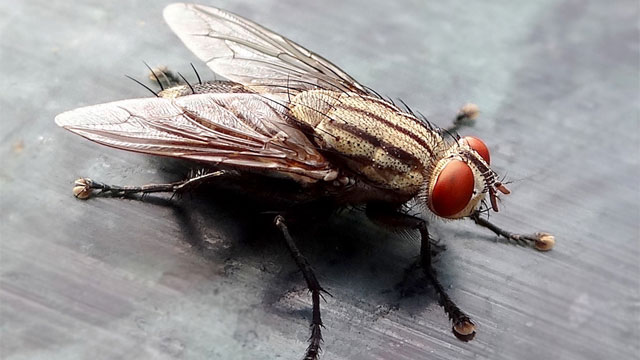House Fly

Flies are not only a nuisance, but they can also be responsible for spreading numerous diseases. This is particularly true of House flies, which breed in organic waste such as manure, garbage, and animal carcasses. They frequent those places and then they come to rest on the surfaces in your space and on your food.
Below is a profile of the House Fly and ways to prevent this pest from infesting your home or property.
| Identification |
|
| Behavior |
|
| Habitat |
|
| Life Cycle |
|
| Seasonality |
|
| Favorable Conditions |
|
| Health Concerns |
|
| Signs of an infestation |
|
What You Can Do To Prevent A House Fly Infestation
- Use plastic liners in all waste receptacles that might collect food garbage; seal the plastic liners before placing in outside dumpsters or garbage cans.
- Remove garbage containing food wastes from the building before nightfall or tie a knot in the plastic liner.
- Keep waste receptacles and dumpsters clean.
- Promptly fix drains or electric garbage disposal units that leak or drains that allow food waste to accumulate under sinks or floors.
- Store food in the refrigerator, freezer, or cooler, or in insect-proof containers such as Tupperware or screw-top jars (screw-top jars are not insect-proof unless the lid has a rubber gasket).
- Outdoors, pick up and remove fallen fruit as soon as possible.
- Maintain compost piles properly, otherwise they can produce large numbers of flies.
- Place dumpsters, garbage cans, and recycling containers away from outside doors to the building.
- Remove pet feces as soon as possible, place in a sealed plastic bag, and then into a waste receptacle or dumpster.
- The brown- to cream-colored fly specks found on walls and other surfaces where flies rest have a strong fly-attracting odor. They should be frequently cleaned off of surfaces with an odor-eliminating cleaner (a mild solution of borax or baking soda and water is effective).
To prevent fly entry:
- Tightly screen all windows and doors
- Weather-strip all windows and doors
- Seal gaps around windows and doors
- Screen air intake and exhaust vents
- Equip doors with self-closing devices to prevent their being left open inadvertently
- Install air curtains on doors that must remain open and cannot be screened. The air stream must have a velocity of 1,600 feet per second to be effective.
- Sticky fly tape and/or fly swatters can eliminate a small number of flies indoors; however, fly paper may be considered unsightly.
- Fly traps using ultraviolet light bulbs can be effective inside as a supplement to other measures. They must be used in areas where they are not competing with natural light. Follow the manufacturer's instructions carefully